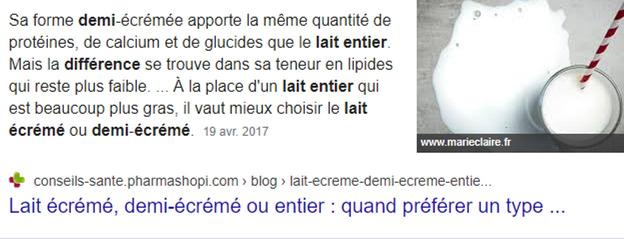"Whole milk is less good for health than half skimmed": a prejudice?
This idea is well rooted in our mentality.We have been tested for several decades: to keep the line, prefer half-skimmed milk.These are the words found in most female magazines, for example.However, several studies, including one carried out by a Canadian team, have questioned this postulate.
Half skimmed does not mean "half less cream"
To understand their analysis, we must first recall what is hidden under these two appellations.As the counterpoints magazine explains, the "real" whole milk, that is to say unstallized, is a milk whose fat content has not been modified from the milking.It is the only one to justify the name of whole milk, and yet it is not the one found in food stores within the EU.
Indeed, the milks put up for sale in the union under the names "whole milk or half-skimmed milk" are actually whole or half-skimmed milks called "standardized" without being specified on packaging.These names are therefore ambiguous.In reality, "whole milk" labeled milk is a milk that has been completely skimmed and to which cream is added to standardize it to 36 g/l of fat.Knowing that the content of the milk at the exit of the udder can go up to 45 g/l, there is often a modification of this rate.
As for half skimmed milk, it is the same principle.It is not, as one might think, a milk from which we would have removed half of cream compared to whole milk.This is milk from which all the cream has been removed and to which we then added a certain dose of cream, normalized around 16 g/l.This dose does not quite correspond to the "half" compared to the fat content of whole milk.
Whole milk could better arm children against obesity

Once these terms are known, let's take a look at different studies on matter.A team of Canadian researchers brought together a large amount of studies on the subject.This meta-analysis, carried out at St St.Michael de Toronto took 28 studies carried out in seven countries around the world including 20 in total.897 children aged 1 to 18.Result: children who consume whole milk Recording a lower risk of 40% overweight or obesity in comparison with those who drink half skimmed or skimmed milk.
To explain their results, the researchers argue that whole milk would be richer in vitamin D due to the liposoluble nature (that is to say which dissolves in fat) of it.Researchers also think that the difference, they say, could be the consequence of a more intense satietogenic effect, thus reducing the total caloric intake.
No too fast conclusions
In fact, even if scientists noted that ten out of 28 studies had not found any link between consumption of whole milk and a lowered risk of overweight or obesity, they also specified that no study included in the meta-Analysis had only shown children who drank half skimmed milk had a lower risk of suffering from obesity and overweight.
In other words, nothing proves that whole milk is better or worse than half skimmed milk concerning obesity.As a science and future article pointed out, the work of these researchers in any case questions the current recommendations for children from the National Nutrition Health Plan (PNNS) who suggest replacing whole milk with half skimmed milk incase of overweight.
This questioning of great ideas in terms of health and the harmful effect of fats is not only confined to milk.Other foods rich in fat, such as butter, also know this kind of turnaround in mentalities, or at least in some.Witness the difference between these two Time covers, far from thirty years of eating habits ...








